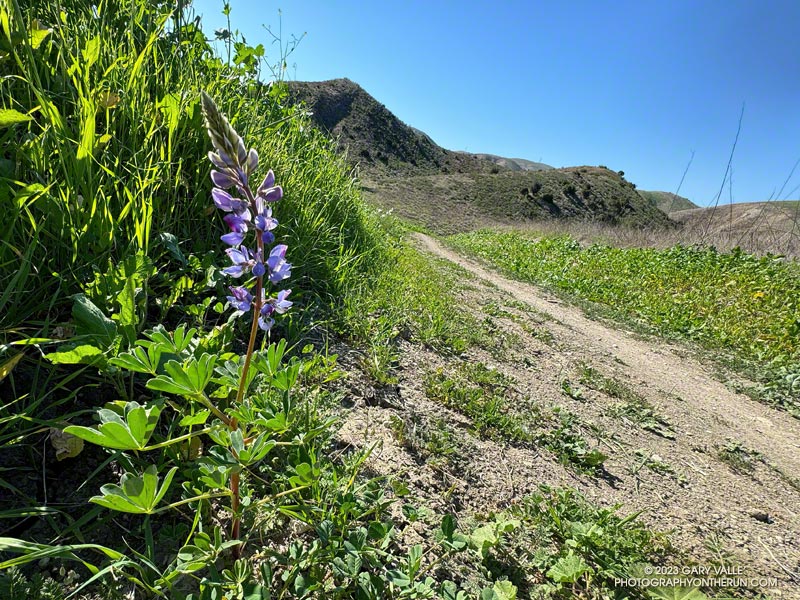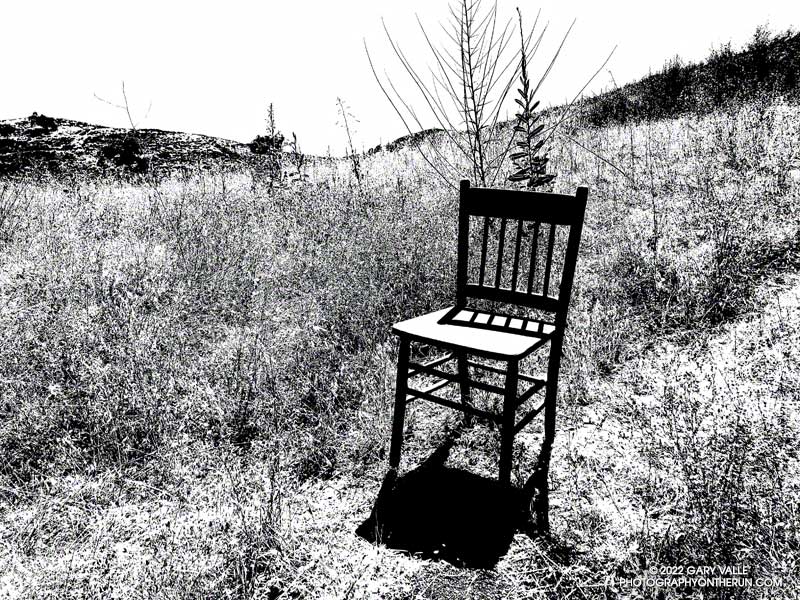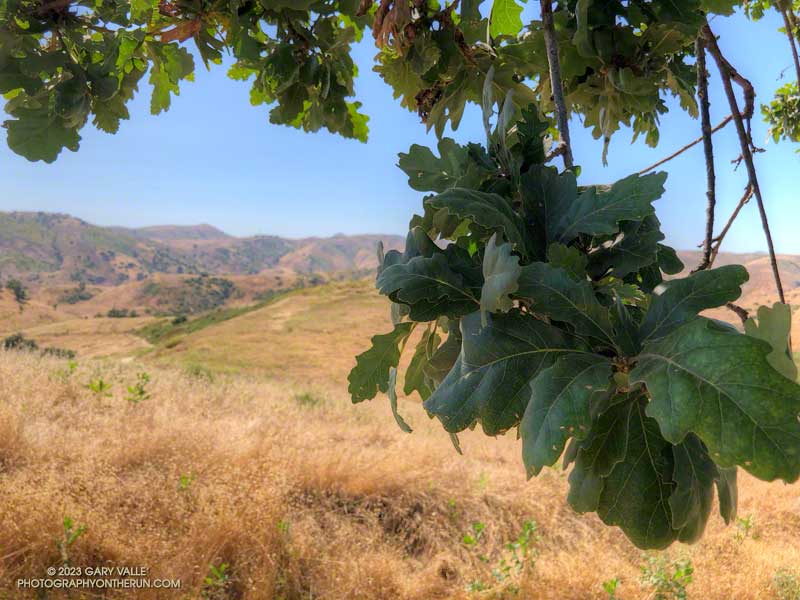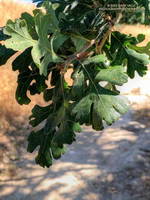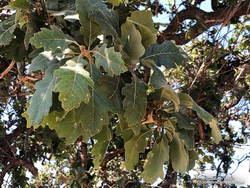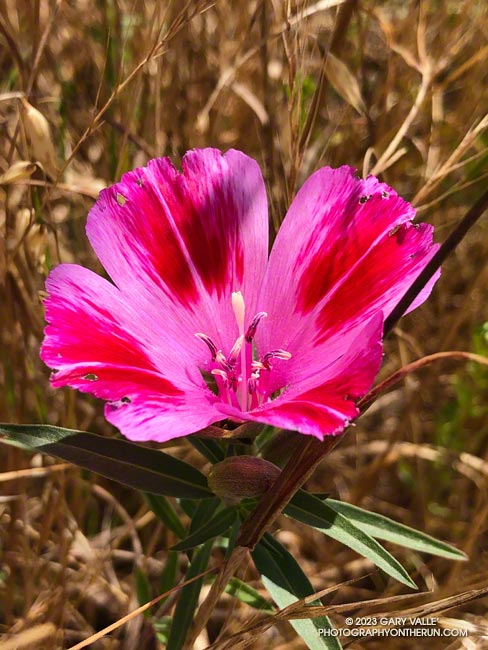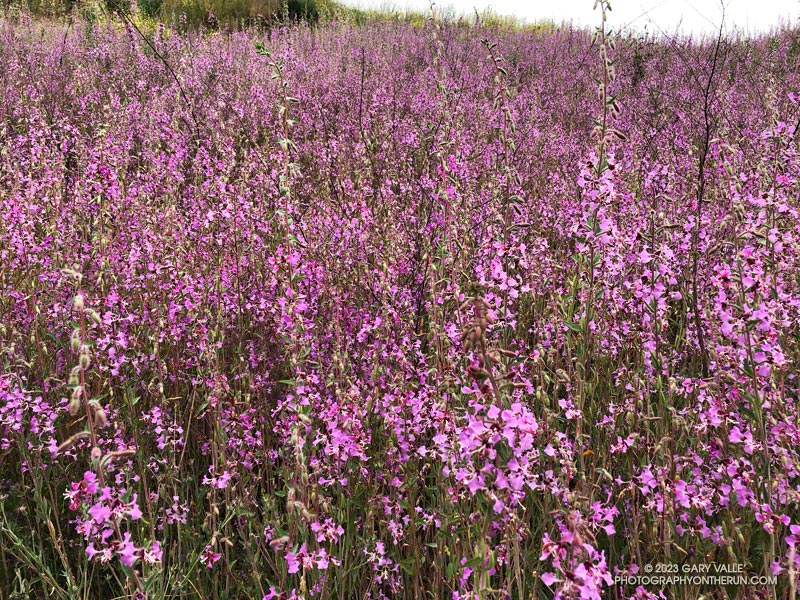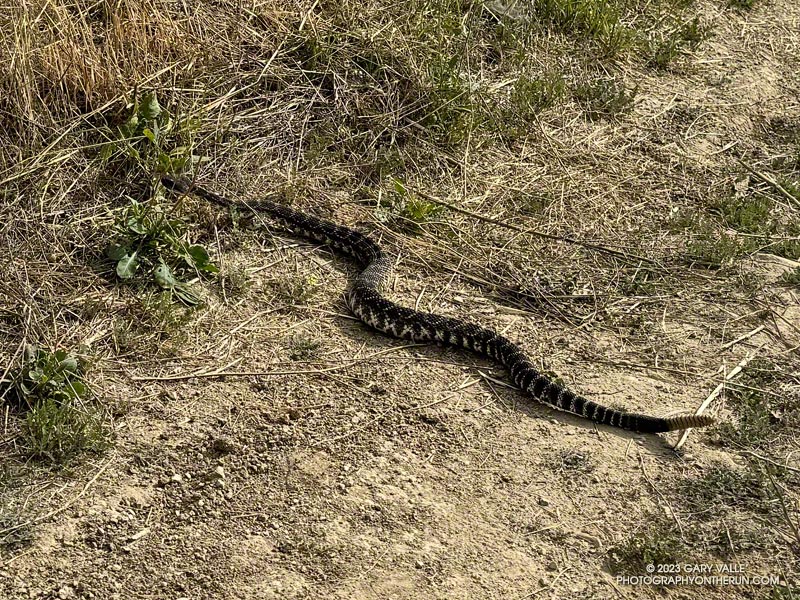
I’ve encountered some interesting things crawling on the ground at Ahmanson Ranch this Fall.
Gopher snakes are the snake I see most frequently at Ahmanson Ranch (Upper Las Virgenes Canyon Open Space Preserve). Recently, I came across this sizable gopher snake crossing the dirt road on the long switchback above the Victory Trailhead. Despite the small size of its head, a gopher snake can consume prey much larger than might be imagined.
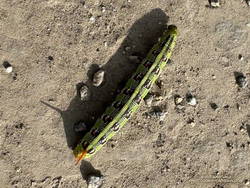
Just a few days ago — in virtually the same place as the gopher snake — I encountered a good-sized Southern Pacific rattlesnake serpentining across the dirt road and continuing up the brush-covered hill (video). The snake reminded me of a rattlesnake I photographed near the Victory Trailhead in November 2019. In the Fall, Southern Pacific and other rattlesnakes are said to return to the same den year after year. This rattlesnake had about 13 rattle segments, and the November 2019 rattlesnake about 10. Both were headed in the same direction. Might they be the same snake going back to a den?
On that same run as when I encountered the rattlesnake, I came across this remarkably colored and patterned caterpillar on Lasky Mesa. It turns out to be the caterpillar of a white-lined sphinx moth — a type of hummingbird moth.
A few days later — near the same place where I encountered the gopher snake and rattlesnake — I happened upon this tarantula scurrying across the road. Male tarantulas search for mates in the Fall.
Some related posts:
Ahmanson Trailhead Rattlesnake
Big Southern Pacific Rattlesnake at Ahmanson Ranch
Stuck in the Drive-Thru
September and October are Tarantula Months!
If It Looks Like a Hummingbird and Flies Like a Hummingbird…

